Health is on most people’s agenda these days and food manufacturers are very much aware of this. However, if we all started to enjoy good health due to changes we make in our lifestyles and diets their businesses would lose revenue and shrink. No businessman or food manufacturer wants this so they have developed ways of selling more of their unhealthy products simply by labelling them as healthy and many people have bought into this hype. In this post we take a look at some of the unhealthiest foods that are masquerading as healthy.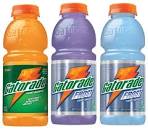
Sports| Energy| Diet Drinks
Sports and energy drinks are quite a fad nowadays but those who consume them appear oblivious to the unhealthy nature of these drinks. Firstly, they are full of caffeine and can sometimes contain more than a cup of coffee, as manufacturers only mention the presence of caffeine but not the quantity. Caffeine can be addictive resulting in the need for more and more. It is also a tanic acid which can block the absorption of nutrients from food. They are sold as a dietary supplement not a medicine consequently they do not have to undergo any tests. They are loaded with sugar, sometimes a quarter of a cup on average. Because of the high calorific content people usually drink more calories than they burn off.
Sports drinks are typically high in fructose, HFCS (high fructose corn syrup), artificial flavours and food colourings and may also contain herbal stimulants. These have a negative impact on insulin sensitivity which of course is associated with diabetes. Furthermore most sports drinks also contain high amounts of sodium which can adversely affect your kidneys and elevate your blood pressure. Labels on the containers will simply say “carbohydrates” but these are simple carbohydrates which you should avoid if you want to maintain good health. The labels will also say “per serving” but the amount in the can usually equates to two servings. Sports drinks are meant to replenish the electrolytes (potassium and sodium) you lose while sweating from exercise however, there are two better options. Firstly, put a small amount of natural sea salt in a glass of water and drink it. Contrary to processed salt, sea salt contains eighty four different minerals and trace minerals that your body needs for optimal function. Secondly, drink some real coconut water which is one of the highest sources of electrolytes known.
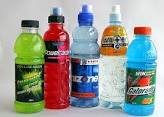 Energy drinks can be more harmful to athletes than non-athletes because they can elevate blood pressureand can also cause dehydration. They may not have the same amount of caffeine as sports drinks but they have their own issues. Energy drinks differ from isotonic drinks although they are regularly regarded as being the same. Isotonic drinks are those that contain similar concentrations of salt and sodium as the human body. Energy drinks on the other hand contain caffeine and taurine which is an amino acid which helps strengthen the immune system but is dangerous for the heart muscle when combined with caffeine. This causes a sudden drop in blood pressure by abruptly relaxing the nervous system. They also worsen the effects of anxiety, depression and bipolar disease and interact adversely with medications. Some energy drinks contain alcohol and as a consequence have been banned for children under 14 years old, pregnant women and breast feeding mothers. The Medical Journal of Paediatrics has warned that energy drinks can cause children to suffer strokes, seizures, heart palpitations and sudden death. They can also be highly addictive. Did you know that every year in the USA one thousand teenagers suffer strokes? So, don’t let the “healthy” image fool you. Drink clean water with a dash of lemon or lime. You will feel full, take in no fat or calories and at the same time you are alkalizing your body.
Energy drinks can be more harmful to athletes than non-athletes because they can elevate blood pressureand can also cause dehydration. They may not have the same amount of caffeine as sports drinks but they have their own issues. Energy drinks differ from isotonic drinks although they are regularly regarded as being the same. Isotonic drinks are those that contain similar concentrations of salt and sodium as the human body. Energy drinks on the other hand contain caffeine and taurine which is an amino acid which helps strengthen the immune system but is dangerous for the heart muscle when combined with caffeine. This causes a sudden drop in blood pressure by abruptly relaxing the nervous system. They also worsen the effects of anxiety, depression and bipolar disease and interact adversely with medications. Some energy drinks contain alcohol and as a consequence have been banned for children under 14 years old, pregnant women and breast feeding mothers. The Medical Journal of Paediatrics has warned that energy drinks can cause children to suffer strokes, seizures, heart palpitations and sudden death. They can also be highly addictive. Did you know that every year in the USA one thousand teenagers suffer strokes? So, don’t let the “healthy” image fool you. Drink clean water with a dash of lemon or lime. You will feel full, take in no fat or calories and at the same time you are alkalizing your body.
Most popular sugar sweetened beverages have “diet” versions which are marketed as calorie free and should therefore assist with weight loss, diabetes and metabolic syndrome.
Foods labelled “Fat Free” or “Low Fat”
Not all fats are bad and fat actually adds flavour to food. When manufacturers remove fat from foods so that the food can be labelled “fat free” they remove the flavouring agent (fat) which has to be replaced by something else and that something is usually sugar or sodium. People usually see “fat free” as a licence to eat more without realizing the adverse impact that “fat free” food is having on their bodies. Sugar as you know is a major player when it comes to diabetes and premature aging through the process known as glycation and excess sodium is associated with kidney issues and high blood pressure. Ironically, these fat free foods may contain calories but no fibre, vitamins or minerals. So what is masquerading as healthy due to its fat free or low fat nature may in fact be worse than the full fat version. You should also understand the terminology. “Reduced fat” or “light” mean that the product contains 30% less fat than the standard product. Low fat means containing less than 3% fat and “fat free” means that that product contains less than 0.5 grams of fat per serving.
Premade Smoothies
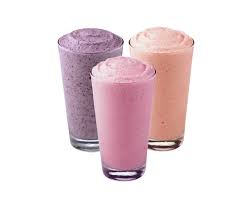 Most ready-made smoothies sold in restaurants and commercial outlets are nothing more than sugary slush and contain one of the worse sugars, fructose. In addition, they may also contain regular milk, which is one of the primary ingredients of many smoothies and which may have come from cows that have been given hormones and antibiotics, tap water which may contain lead, arsenic, oestrogen, pharmaceutical drugs and other metals and bottled water which in some cases is no different from tap water. Although it may not always be convenient to make your own but you should do so whenever it’s possible. It would be a far healthier option and is much easier than you think.
Most ready-made smoothies sold in restaurants and commercial outlets are nothing more than sugary slush and contain one of the worse sugars, fructose. In addition, they may also contain regular milk, which is one of the primary ingredients of many smoothies and which may have come from cows that have been given hormones and antibiotics, tap water which may contain lead, arsenic, oestrogen, pharmaceutical drugs and other metals and bottled water which in some cases is no different from tap water. Although it may not always be convenient to make your own but you should do so whenever it’s possible. It would be a far healthier option and is much easier than you think.
After you have made your first home made smoothies you will feel so proud and pleased with yourself you might want to invite some friends over to sample them, including me. Here are some base ingredients you can start with. Coconut or almond milk, clean water that has been filtered, tea as some teas can improve the nutritional value of your smoothie turning it into an elixir. Try green tea, holy basil (tulsi), mint and peppermint and fermented beverages like kefir and kombucha. Do not forget to add some powerful antioxidant fruits, herbs and spices like cocoa, maca, aloe vera, cinnamon, ginger, cayenne, all coconut products, green vegetables, organic Greek yoghurt, blueberries, avocados and mangoes. There are endless options here and bear in mind that every mistake is a new recipe. Once you have tried this you would not want to go back to the store bought unhealthy varieties. You may even start a little cottage business of your own.
Soy
About 5,000 years ago when soybeans were first cultivated in China the plant was used solely in crop rotation in order to replace nitrogen in the soil. So the root was the essential part of the plant. The plant itself is so toxic that even some animals would not eat it as it contained phytates, goitrogens and enzyme inhibitors all for its own protection. As you know many plants have different ways of protecting themselves, some with poisonous leaves and sap, others with thorns.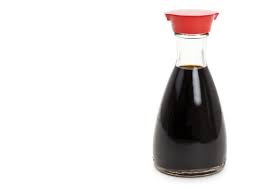
In unfermented soy goitrogens slow down the functioning of the thyroid gland which can lead to goiter and thyroid cancer. Soy also contains phytates (phytic acid) which obstructs the absorption of minerals like zinc, iron, copper and calcium and research suggests that giving unfermented soy to children can not only stunt their growth but can be fatal. The phyto-oestrogen (phyto = plant) in soy is linked to infantile leukemia and breast cancer in adult women. Most soy crops have also been genetically modified and sprayed with herbicides such as glyphosate which has been linked to cancer. Several studies have also linked soy to digestive disorders, immune system breakdown, cognitive decline, reproductive disorders, infertility, cancer and heart disease. Most at risk are infants, especially those who are being fed regularly on baby formulas containing soy, vegans and vegetarians and midlife women seeking help with menopausal symptoms. Whole soy beans, soy milk, soy chips, soy flour, soy protein isolates and the whole raft of soy products or those containing unfermented soy have higher levels of phytic acid and should be considered unhealthy. Remember also that soy is a non-alkalizing product. Its use, however,is so widespread that you really have to be diligent to avoid it completely.
 About 3,000 BC someone discovered a mould on soya beans and this started the process of fermentation which has changed over the years and has become extremely commercialized. Soy sauce is best known as a flavour enhancer. When made in the traditional way, through a process of fermentation which lasts about 18 months it is considered to be healthy as it is unpasteurized and as a consequence retains beneficial nutrients and enzymes and is also wheat free. The most common soy sauces sold in restaurants and supermarkets, however, are made between two days and four months and are made from defatted soy bean pulp. It is this process that strips the soy bean of its nutrients and flavour. Commercialized soy is high in sodium and we know the adverse effect of sodium on blood pressure and the kidneys. It is also flavoured with glutamates which are in essence mono sodium glutamate (MSG) and it is also about 18% salt. Eating large amounts of soy whether unfermented or fermented may adversely affect the functioning of the thyroid gland as mentioned before. A 2008 study of 8,000 Asian men who ate high amounts of tofu showed that they had smaller brain sizes and three times the rate of senile dementia than those whose consumption of tofu was minimal. The suggestion here is that eating foods high in isoflavones, such as soy protein, may accelerate the aging of the brain. Apparently, when it comes to soy you should only eat natto, tempeh and miso and then in moderation.
About 3,000 BC someone discovered a mould on soya beans and this started the process of fermentation which has changed over the years and has become extremely commercialized. Soy sauce is best known as a flavour enhancer. When made in the traditional way, through a process of fermentation which lasts about 18 months it is considered to be healthy as it is unpasteurized and as a consequence retains beneficial nutrients and enzymes and is also wheat free. The most common soy sauces sold in restaurants and supermarkets, however, are made between two days and four months and are made from defatted soy bean pulp. It is this process that strips the soy bean of its nutrients and flavour. Commercialized soy is high in sodium and we know the adverse effect of sodium on blood pressure and the kidneys. It is also flavoured with glutamates which are in essence mono sodium glutamate (MSG) and it is also about 18% salt. Eating large amounts of soy whether unfermented or fermented may adversely affect the functioning of the thyroid gland as mentioned before. A 2008 study of 8,000 Asian men who ate high amounts of tofu showed that they had smaller brain sizes and three times the rate of senile dementia than those whose consumption of tofu was minimal. The suggestion here is that eating foods high in isoflavones, such as soy protein, may accelerate the aging of the brain. Apparently, when it comes to soy you should only eat natto, tempeh and miso and then in moderation.
Vegetable Oils
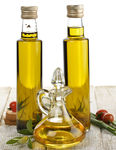 Vegetable oils may be regarded as healthy because the word “vegetable” is present in the labelling and in the human mind vegetables are healthy. Vegetable oils cannot be extracted from the base product (peanuts, soy) just by pressing. The oil is chemically removed, de-odourized and altered and as a result are some of the most chemically altered foods. They contain large amounts of omega 6, massive amounts of trans-fats and are easily oxidized (oxidation being one of the three “thieves of good health”). Vegetable oils also contain omega 3 fatty acids and monounsaturated fats and these are the reasons they are promoted as healthy but very little mention is ever made by the manufacturers and their marketing teams of the high amount of omega 6. Consumers, consequently, buy into the omega 3 marketing without checking the omega 6 content. The ratio between the two should be 1:1 but these days the ratio can be anything from 10:1 to 25:1 in favour of omega 6. Vegetable oils also contain additives, pesticides and chemicals in addition to BHA and BHT which prevent the oils from spoiling but have been shown to produce cancer compounds in the human body. They have been linked to kidney damage, infertility, obesity, behavioural changes, liver damage and disruption of the immune system. Additionally, most, if not all vegetable oils come from genetically modified sources which have been treated with pesticides. Oils to avoid as much as possible are canola, corn, soybean, vegetable, peanut, sunflower, safflower, cottonseed, grape seed and margarine. It is also worth bearing in mind that most processed foods also contain these oils. Virgin coconut oil, avocado oil, almond oil and olive oil are the healthiest options.
Vegetable oils may be regarded as healthy because the word “vegetable” is present in the labelling and in the human mind vegetables are healthy. Vegetable oils cannot be extracted from the base product (peanuts, soy) just by pressing. The oil is chemically removed, de-odourized and altered and as a result are some of the most chemically altered foods. They contain large amounts of omega 6, massive amounts of trans-fats and are easily oxidized (oxidation being one of the three “thieves of good health”). Vegetable oils also contain omega 3 fatty acids and monounsaturated fats and these are the reasons they are promoted as healthy but very little mention is ever made by the manufacturers and their marketing teams of the high amount of omega 6. Consumers, consequently, buy into the omega 3 marketing without checking the omega 6 content. The ratio between the two should be 1:1 but these days the ratio can be anything from 10:1 to 25:1 in favour of omega 6. Vegetable oils also contain additives, pesticides and chemicals in addition to BHA and BHT which prevent the oils from spoiling but have been shown to produce cancer compounds in the human body. They have been linked to kidney damage, infertility, obesity, behavioural changes, liver damage and disruption of the immune system. Additionally, most, if not all vegetable oils come from genetically modified sources which have been treated with pesticides. Oils to avoid as much as possible are canola, corn, soybean, vegetable, peanut, sunflower, safflower, cottonseed, grape seed and margarine. It is also worth bearing in mind that most processed foods also contain these oils. Virgin coconut oil, avocado oil, almond oil and olive oil are the healthiest options.
Fruit Juices
Fruit juices are in essence simple carbohydrates which are absorbed very quickly by the body and contain as much sugar as ordinary sugar drinks. They are a very processed product and are not as pure as manufacturers try to make us believe. Most of them are also made from “concentrates” which, when labelled can be misleading. Fruit concentrate is essentially the fruit with the water removed but if the fruit drink does not say 100% fruit juice from concentrate then there is a very good chance that it contains additives and 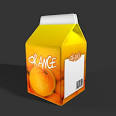 preservatives, more so if it says “punch” or “beverage” on the label. Because they are simple carbohydrates, mainly sugars, they increase the risk of type 2 diabetes. If you take the time to read the labels on the cartons or cans you will see that they not only contain simple sugars but some of the worst types, such as Fructose, Aspartame and High Fructose Corn Syrup (HFCS) with a taste of pineapple, strawberry, mango, cherry or whatever to give it a different flavour. As you know excess sugar is not conducive to good health.
preservatives, more so if it says “punch” or “beverage” on the label. Because they are simple carbohydrates, mainly sugars, they increase the risk of type 2 diabetes. If you take the time to read the labels on the cartons or cans you will see that they not only contain simple sugars but some of the worst types, such as Fructose, Aspartame and High Fructose Corn Syrup (HFCS) with a taste of pineapple, strawberry, mango, cherry or whatever to give it a different flavour. As you know excess sugar is not conducive to good health.
Many cereals
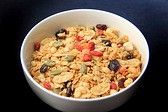 All packaged cereals are produced by a process called extrusion. This involves high heat and pressure to form the grains into whatever shape the manufacturer wants. Extrusion destroys most of the nutrients, including some of the vitamins that have been added to the cereal. Even so, vitamins that are added to cereals are synthetic which are not readily absorbed by the body. Cooking foods at high temperature destroys amino acids making them highly toxic. It also gives rise to advanced glycation end products (AGE) which are associated with disease and accelerated aging. See article on “Thieves of Good Health”.
All packaged cereals are produced by a process called extrusion. This involves high heat and pressure to form the grains into whatever shape the manufacturer wants. Extrusion destroys most of the nutrients, including some of the vitamins that have been added to the cereal. Even so, vitamins that are added to cereals are synthetic which are not readily absorbed by the body. Cooking foods at high temperature destroys amino acids making them highly toxic. It also gives rise to advanced glycation end products (AGE) which are associated with disease and accelerated aging. See article on “Thieves of Good Health”.
Rich people sometimes eat bad food: Kikuyu Proverb
